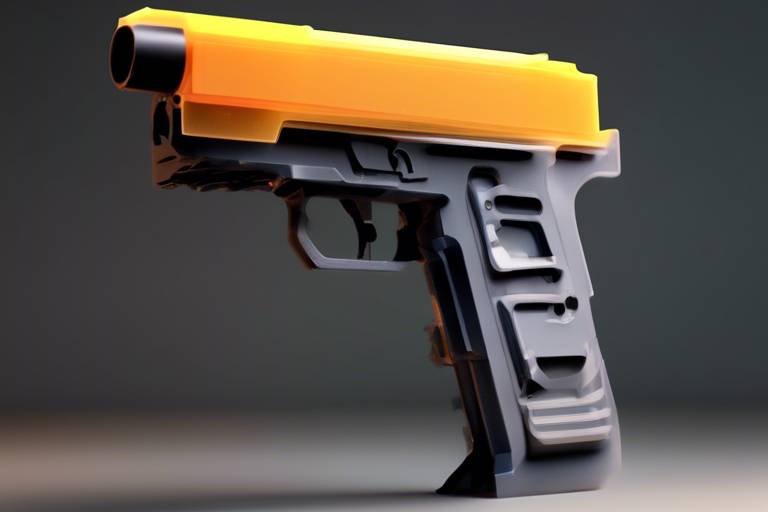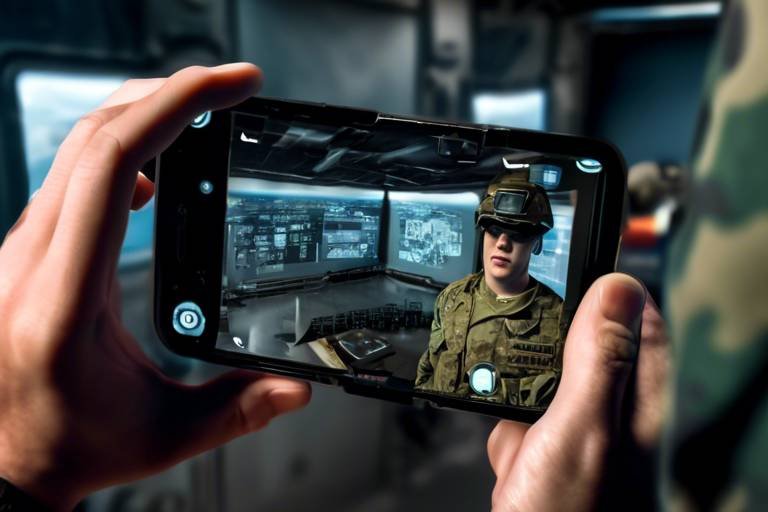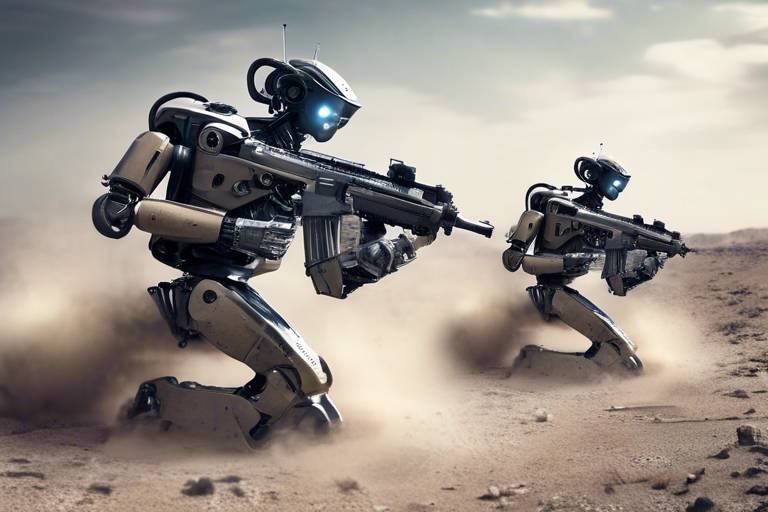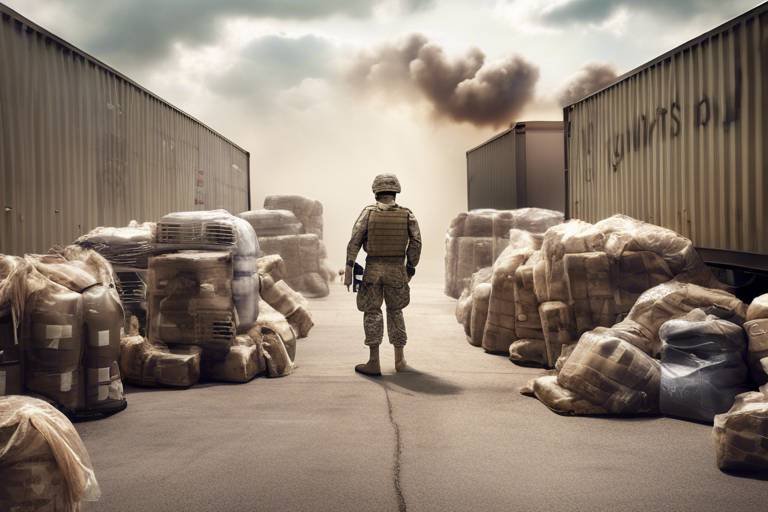AI and Robotics - Working Together in the Military Field
In the rapidly evolving landscape of modern warfare, the integration of artificial intelligence (AI) and robotics is not just a trend; it's a revolution. Imagine a battlefield where machines and humans collaborate seamlessly, leveraging the strengths of each to enhance operational effectiveness. This synergy is transforming military operations, making them more efficient, precise, and responsive to dynamic threats. The combination of AI and robotics is redefining how military forces strategize, execute missions, and manage resources.
The military has always been at the forefront of adopting new technologies, and the latest advancements in AI and robotics are no exception. From unmanned aerial vehicles (UAVs) to autonomous ground vehicles, these technologies are designed to reduce human risk while increasing operational capabilities. Think of them as the new-age soldiers, equipped with advanced sensors and decision-making algorithms that allow them to navigate complex environments and make real-time decisions. The potential benefits are immense, but so are the challenges that come with their integration.
As we dive deeper into this fascinating topic, we'll explore the evolution of military robotics, the pivotal role of AI in decision-making, and the challenges that arise from this integration. Furthermore, we will gaze into the future, speculating on how these technologies will continue to shape the military landscape. So, buckle up as we embark on this journey into the world where AI and robotics unite for defense.
The journey of military robotics has been nothing short of extraordinary. From the rudimentary prototypes of the past to the sophisticated systems we see today, the evolution is marked by significant milestones. Initially, military robots were simple machines designed for specific tasks, often requiring direct human control. However, advancements in technology have led to the development of autonomous systems capable of performing complex operations without direct human intervention.
One of the most notable milestones was the introduction of drones, which revolutionized reconnaissance and surveillance. These aerial vehicles have become essential tools for gathering intelligence and conducting operations in hostile environments. The transition from remote-controlled drones to fully autonomous systems represents a significant leap forward, allowing for more efficient and safer military operations.
Artificial intelligence plays a critical role in enhancing decision-making processes within military operations. By processing vast amounts of data, AI systems provide military personnel with invaluable insights that inform strategic planning and execution. Imagine having a digital assistant that analyzes countless variables in real-time, helping commanders make informed decisions swiftly. This capability is not just beneficial; it is essential in today’s fast-paced combat scenarios.
One of the key advantages of AI in military applications is its ability to process and analyze massive datasets for intelligence gathering. Traditional methods of data analysis can be time-consuming and prone to human error. In contrast, AI systems can rapidly sift through information from various sources, including satellite imagery, social media, and sensor data, enabling military personnel to make informed decisions based on accurate and timely information.
At the heart of AI's capabilities are machine learning algorithms, which empower military systems to recognize patterns, predict outcomes, and adapt to changing battlefield scenarios. These algorithms are designed to learn from past experiences, continuously improving their performance over time. For instance, a machine learning model could analyze previous combat missions to identify successful strategies, providing valuable recommendations for future operations.
AI significantly contributes to real-time situational awareness, allowing military units to respond swiftly to threats. With the integration of AI, military personnel can access real-time data, enhancing their ability to assess situations accurately and coordinate effectively during operations. This capability not only improves response times but also enhances the overall safety of troops on the ground.
The deployment of autonomous systems in combat scenarios has been a game-changer. Drones and unmanned ground vehicles (UGVs) have proven invaluable in reducing human risk and enhancing operational efficiency. These systems can conduct reconnaissance missions, deliver supplies, and even engage in combat, all while minimizing the exposure of soldiers to danger.
Despite the numerous advantages, integrating AI and robotics into military frameworks presents significant challenges. Ethical concerns, technological limitations, and the need for robust cybersecurity measures are just a few of the hurdles that must be addressed. As we navigate this complex landscape, it is essential to consider the implications of these technologies on warfare and society.
The ethical implications of using AI and robotics in warfare cannot be overlooked. Questions surrounding accountability, decision-making in lethal situations, and the potential for unintended consequences are critical discussions that military leaders must engage in. As we delegate more decision-making to machines, who is responsible for their actions? This question looms large as we move forward.
Technological hurdles must also be overcome for successful integration. Issues such as reliability, interoperability, and the need for continuous advancements in AI and robotics present challenges that demand attention. Ensuring that these systems can operate seamlessly together is crucial for maximizing their effectiveness in the field.
Looking ahead, the future of AI and robotics in defense holds exciting possibilities. As technology continues to advance, we can expect to see new applications that further enhance military capabilities. From improved predictive analytics to more sophisticated autonomous systems, the landscape of modern warfare is set to evolve dramatically.
- How is AI changing military strategy? AI enhances decision-making and operational efficiency, allowing for more informed strategies.
- What are the ethical concerns surrounding military AI? Ethical considerations include accountability and decision-making in lethal situations.
- What are the challenges of integrating robotics into the military? Key challenges include technological limitations and the need for robust cybersecurity measures.
- What is the role of drones in modern warfare? Drones are used for reconnaissance, surveillance, and even combat, reducing risks to human soldiers.

The Evolution of Military Robotics
The journey of military robotics has been nothing short of remarkable, evolving from rudimentary machines to sophisticated systems that are now integral to modern warfare. In the early days, military robotics were primarily experimental, with prototypes that barely scratched the surface of what was possible. These early machines, often resembling oversized toys, were limited in their capabilities and application. However, as technology advanced, so did the complexity and functionality of these robotic systems.
Significant milestones have marked the evolution of military robotics. For instance, during the Cold War, the U.S. and Soviet Union invested heavily in robotic technology, leading to the development of early drones and unmanned vehicles. The introduction of unmanned aerial vehicles (UAVs) in the 1990s represented a turning point, allowing military forces to conduct surveillance and reconnaissance missions without putting human pilots at risk. This capability not only enhanced operational safety but also provided a strategic advantage on the battlefield.
Fast forward to the 21st century, and we see an explosion of innovation in military robotics. The integration of artificial intelligence has transformed how these machines operate. Today’s military robots can perform complex tasks autonomously, from navigating challenging terrains to engaging in combat scenarios. For instance, autonomous ground vehicles can transport supplies, while drones equipped with AI can analyze targets and make real-time decisions based on vast amounts of data.
In addition to drones and ground vehicles, robotics in the military now encompasses a range of systems, including robotic exoskeletons that enhance soldiers' strength and endurance, and robotic bomb disposal units that can safely neutralize explosive threats. These advancements are not just about efficiency; they also aim to reduce the risk to human life, a crucial consideration in military operations.
As we look ahead, the future of military robotics seems poised for even greater advancements. The ongoing research and development in AI and robotics promise to deliver systems that are not only more capable but also more adaptable to the ever-changing dynamics of warfare. The integration of machine learning algorithms will enable robots to learn from their experiences, improving their effectiveness over time.
In conclusion, the evolution of military robotics reflects a broader trend in technology where machines are becoming increasingly autonomous and intelligent. This transformation is reshaping the landscape of modern warfare, providing military forces with enhanced capabilities and greater operational efficiency. As we continue to innovate, the possibilities for military robotics seem limitless, paving the way for a future where humans and machines work hand in hand on the battlefield.
- What are the main types of military robots currently in use?
Military robots include drones, unmanned ground vehicles, robotic exoskeletons, and bomb disposal robots. - How do AI and robotics improve military operations?
They enhance decision-making, improve situational awareness, and reduce risks to human life during missions. - What are the ethical concerns surrounding military robotics?
Concerns include accountability for decisions made by autonomous systems and the potential for unintended consequences in combat scenarios.
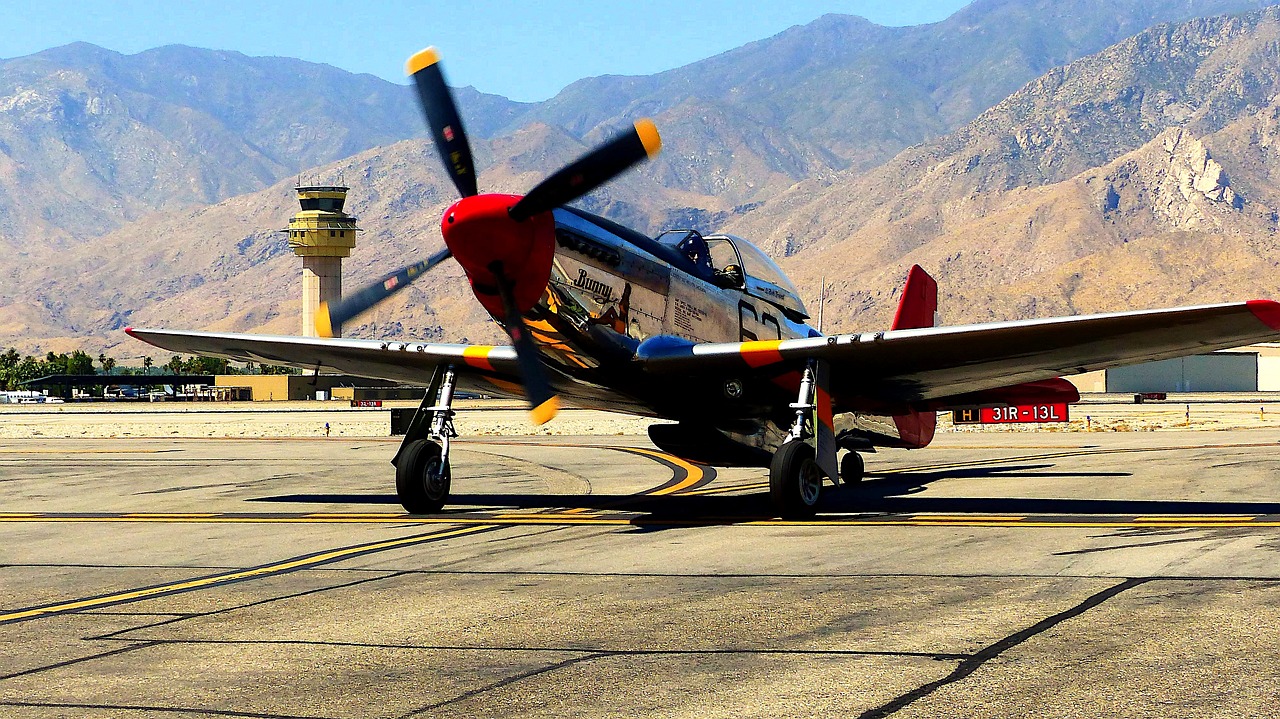
AI's Role in Military Decision-Making
In today's fast-paced battlefield, the ability to make quick and informed decisions can mean the difference between victory and defeat. This is where artificial intelligence (AI) steps in, revolutionizing the way military operations are conducted. Imagine a world where data is analyzed in seconds, providing military leaders with insights that would have taken humans weeks to compile. That's the power of AI in military decision-making.
AI enhances decision-making processes by utilizing advanced data analysis techniques, predictive modeling, and real-time assessments. These capabilities allow military personnel to strategize and execute operations with unprecedented efficiency. For instance, AI can analyze satellite images, drone footage, and various intelligence reports simultaneously, identifying patterns and potential threats that might go unnoticed by human analysts.
One of the most significant advantages of AI in military operations is its ability to process vast amounts of data for intelligence gathering. Traditional methods of intelligence analysis can be time-consuming and prone to human error. However, AI systems can sift through terabytes of information in mere moments, providing actionable insights. This capability enables military commanders to make informed decisions based on accurate and timely information, significantly reducing the risk of operational failures.
At the heart of AI's effectiveness in military decision-making are machine learning algorithms. These algorithms can learn from historical data, recognize patterns, and predict outcomes based on current battlefield conditions. For example, by analyzing past engagements, AI can forecast enemy movements and suggest optimal strategies for countering potential threats. This predictive capability not only enhances planning but also allows for real-time adjustments during operations.
Moreover, AI contributes significantly to real-time situational awareness. In the chaos of combat, understanding the battlefield dynamics is crucial. AI systems can integrate data from various sources—drones, ground sensors, and reconnaissance teams—to create a comprehensive operational picture. This real-time awareness enables military units to respond swiftly to threats, coordinate effectively, and adapt to changing scenarios. Imagine a commander receiving instant updates on troop movements and enemy positions, allowing for rapid strategic shifts. This is the reality that AI brings to modern warfare.
However, the integration of AI in military decision-making isn't without its challenges. As we embrace this technology, we must also consider the implications of relying on machines for critical decisions. The balance between human intuition and AI efficiency is a topic of ongoing debate. Nevertheless, the benefits are undeniable, and the future of military operations looks promising with AI at the helm.
- How does AI improve military decision-making?
AI enhances decision-making by processing large volumes of data quickly, providing timely insights that inform strategic planning and execution. - What role do machine learning algorithms play?
Machine learning algorithms analyze historical data to recognize patterns and predict outcomes, helping military leaders make informed decisions. - Can AI systems adapt to changing battlefield conditions?
Yes, AI systems can adapt in real-time, allowing for quick adjustments based on new information and evolving situations. - What are the ethical concerns surrounding AI in military operations?
Ethical concerns include accountability for decisions made by AI, especially in lethal situations, and the potential for unintended consequences.

Data Analysis and Intelligence Gathering
The integration of artificial intelligence in military operations has revolutionized the way data is analyzed and intelligence is gathered. In a world where information is constantly flowing, the ability to sift through vast amounts of data quickly and accurately is not just an advantage; it's a necessity. Imagine trying to find a needle in a haystack, but instead of a needle, it's critical information that could influence the outcome of a military operation. This is where AI shines, transforming the chaotic data landscape into a structured and actionable intelligence framework.
AI systems are designed to process and analyze enormous datasets from various sources, including satellite imagery, reconnaissance reports, and social media feeds. By employing advanced algorithms, these systems can identify patterns and trends that human analysts might miss. For instance, AI can detect unusual movements in troop deployments or changes in enemy communication patterns, providing military personnel with timely insights that are crucial for decision-making.
One of the standout features of AI in data analysis is its ability to perform predictive modeling. This means that AI can not only analyze past and present data but also forecast future scenarios based on current trends. Think of it as having a crystal ball that helps military strategists anticipate enemy actions and plan their responses accordingly. This predictive capability enhances strategic planning, allowing commanders to allocate resources more effectively and minimize risks during operations.
Moreover, AI facilitates real-time assessments, which are vital in fast-paced combat situations. For example, during an operation, AI can continuously analyze incoming data streams and provide updates on the battlefield conditions, enemy movements, and even the status of friendly forces. This kind of real-time situational awareness enables commanders to make informed decisions quickly, ensuring that their units can adapt to changing circumstances on the ground.
To illustrate the significance of AI in data analysis, consider the following table that outlines some key benefits:
| Benefit | Description |
|---|---|
| Speed | AI can analyze data at a speed far beyond human capabilities, allowing for quicker decision-making. |
| Accuracy | Advanced algorithms reduce the risk of human error in data interpretation. |
| Comprehensive Analysis | AI can process data from multiple sources, providing a holistic view of the battlefield. |
| Adaptability | Machine learning algorithms improve over time, becoming more effective as they analyze more data. |
As we look to the future, the role of AI in data analysis and intelligence gathering will only grow more pronounced. With advancements in machine learning and data processing technologies, military forces will be better equipped to navigate the complexities of modern warfare. The integration of AI not only enhances operational efficiency but also ensures that military personnel have the most accurate and timely information at their fingertips, which could be the difference between success and failure on the battlefield.
- How does AI improve data analysis in military operations?
AI enhances data analysis by processing large volumes of information quickly and accurately, identifying patterns, and providing predictive insights. - What are the main sources of data used by AI in military intelligence?
AI utilizes data from satellite imagery, reconnaissance reports, social media, and other intelligence feeds to gather actionable insights. - Can AI adapt to new data in real-time?
Yes, AI systems can continuously learn and adapt to new data, improving their accuracy and effectiveness over time. - What challenges does AI face in military applications?
Challenges include ensuring data security, addressing ethical concerns, and overcoming technological limitations.
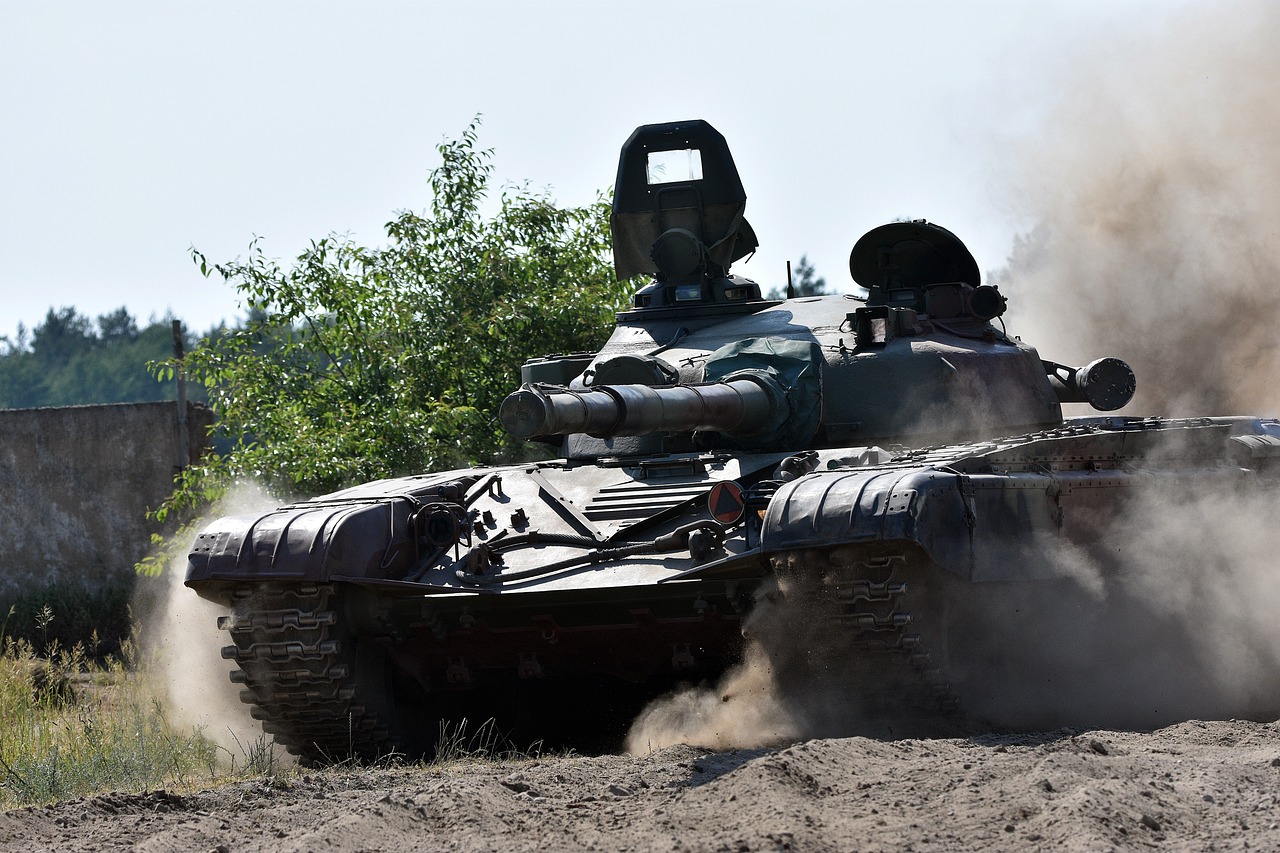
Machine Learning Algorithms
When we talk about in the military domain, we're diving into a world where computers learn from data and improve their performance over time without being explicitly programmed. Imagine having a trusty sidekick that not only assists you in the heat of battle but also learns from each encounter to become even more effective. This is precisely what machine learning brings to the table. From recognizing patterns in enemy movements to predicting outcomes of various combat scenarios, these algorithms are revolutionizing military operations.
One of the most exciting aspects of machine learning in the military is its ability to sift through vast amounts of data. Think of it like trying to find a needle in a haystack, but instead of doing it manually, you have a super-intelligent robot that can analyze and interpret the data almost instantaneously. This capability allows military analysts to make informed decisions based on accurate and timely information, significantly enhancing operational effectiveness.
Machine learning algorithms can be broadly categorized into three types: supervised learning, unsupervised learning, and reinforcement learning. Each type serves a unique purpose:
- Supervised Learning: This involves training a model on a labeled dataset, where the algorithm learns to predict outcomes based on input data. For example, it can be used to identify potential threats by analyzing past attack patterns.
- Unsupervised Learning: This algorithm analyzes data without any prior labels, discovering hidden patterns or groupings. It can help in identifying unknown enemy tactics by clustering similar activities.
- Reinforcement Learning: Here, the algorithm learns through trial and error, receiving rewards for desirable actions. This is particularly useful in developing strategies for unmanned vehicles navigating complex environments.
Moreover, the adaptability of these algorithms is crucial. On the battlefield, conditions can change in the blink of an eye. Machine learning algorithms are designed to adapt to new information, allowing military units to respond to evolving situations effectively. For instance, in drone operations, machine learning can help drones learn from previous flights, optimizing their routes and improving their ability to avoid obstacles.
However, while the benefits of machine learning algorithms in military applications are immense, they also come with challenges. The reliability of these systems is paramount; a malfunction or error in judgment could have catastrophic consequences. Therefore, continuous testing and refinement of these algorithms are essential to ensure they perform as intended in real-world scenarios.
In conclusion, machine learning algorithms are not just a futuristic concept; they are actively shaping the military landscape today. As these technologies continue to evolve, they promise to enhance decision-making processes, improve operational efficiency, and ultimately save lives on the battlefield. The integration of machine learning into military strategies marks a significant leap forward, one that will undoubtedly change the way conflicts are managed in the future.
- What is machine learning in military applications? Machine learning involves algorithms that allow computers to learn from data and improve their performance over time, enhancing decision-making and operational efficiency in military contexts.
- How do machine learning algorithms improve battlefield outcomes? They analyze vast amounts of data to recognize patterns, predict enemy movements, and adapt strategies in real-time, leading to more informed decision-making.
- What are the main types of machine learning algorithms? The main types include supervised learning, unsupervised learning, and reinforcement learning, each serving different purposes in military operations.
- What challenges do machine learning algorithms face in military use? Challenges include ensuring reliability, addressing ethical concerns, and the need for continuous advancements to keep up with evolving combat scenarios.
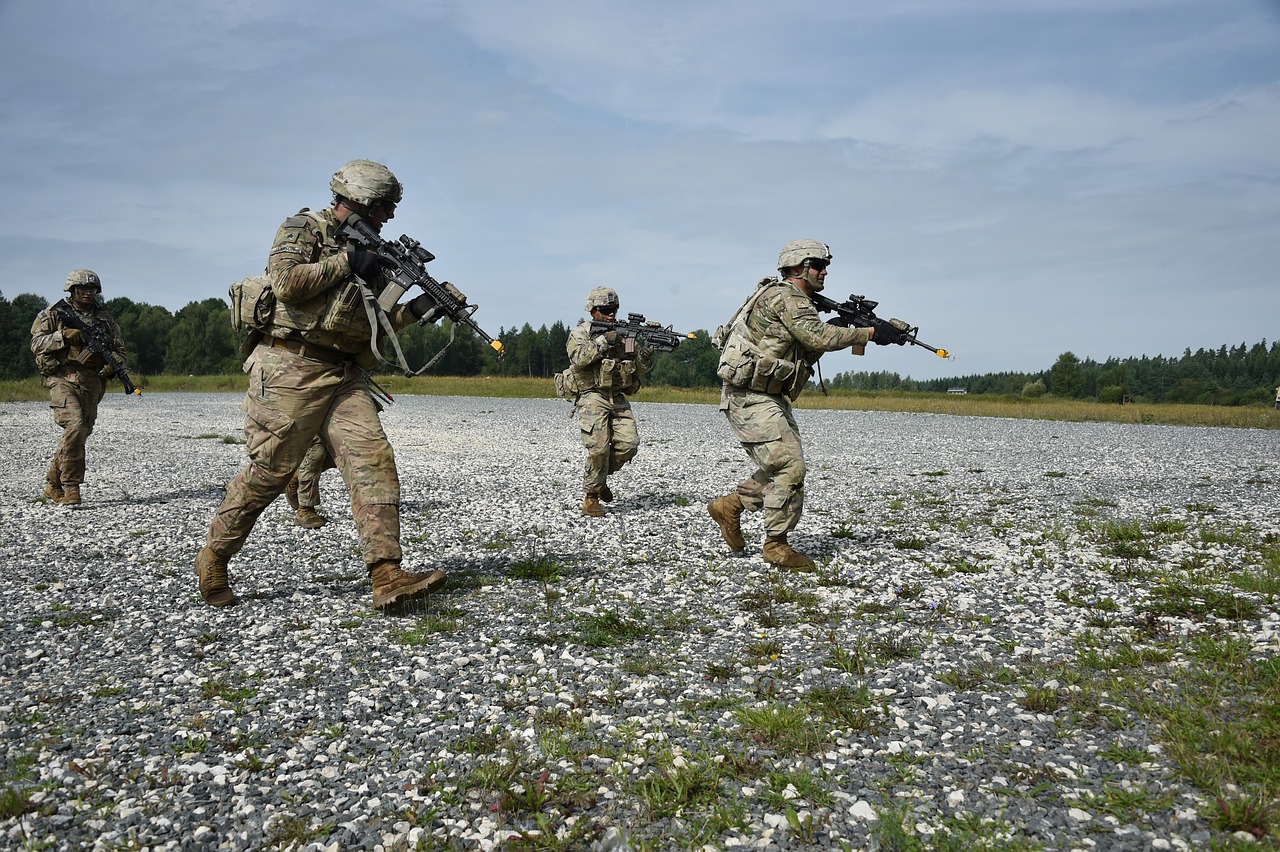
Real-Time Situational Awareness
In the fast-paced world of military operations, is not just a luxury; it’s a necessity. Imagine being in the heat of combat, where every second counts. The ability to assess the battlefield and make informed decisions on the fly can mean the difference between victory and defeat. This is where the integration of artificial intelligence (AI) comes into play, transforming how military units perceive and react to their environment.
AI systems are designed to process vast amounts of data from various sources, including satellite imagery, drone feeds, and ground sensors, all in real-time. By synthesizing this information, AI can provide military personnel with a comprehensive view of the battlefield, identifying potential threats and opportunities that might otherwise go unnoticed. For instance, AI can analyze patterns in troop movements or detect unusual activity, alerting commanders to potential ambushes or enemy advances.
One of the most significant advantages of AI in achieving real-time situational awareness is its ability to continuously learn and adapt. Through machine learning algorithms, AI systems can recognize patterns and predict outcomes based on historical data. This predictive capability allows military leaders to anticipate enemy actions and adjust their strategies accordingly. Picture a chess game where your opponent’s next move is revealed before they make it; that’s the strategic edge AI provides.
Furthermore, AI enhances communication and coordination among military units. By integrating data from various platforms, AI systems can create a unified operational picture, enabling different branches of the military to work together seamlessly. This level of coordination is crucial during complex operations, where multiple units must respond to rapidly changing situations. Imagine a scenario where ground troops, air support, and naval forces are all operating in sync, thanks to AI-driven insights. The efficiency and effectiveness of such operations are significantly heightened.
However, achieving real-time situational awareness is not without its challenges. Data overload can be a double-edged sword; while having access to vast amounts of information is beneficial, filtering through it to find actionable intelligence can be daunting. AI systems must be equipped with advanced algorithms that not only process data quickly but also prioritize the most relevant information for decision-makers. This means that developers are continuously working to improve AI's ability to discern critical information from noise.
In summary, real-time situational awareness powered by AI is revolutionizing military operations. By providing commanders with timely, accurate information and predictive insights, AI is enhancing decision-making processes and ultimately improving operational outcomes. As technology continues to advance, we can expect even greater improvements in how military units perceive and respond to their environments, making the battlefield a safer place for personnel while increasing the effectiveness of military strategies.
- What is real-time situational awareness in the military?
Real-time situational awareness refers to the ability of military personnel to perceive and understand the current state of the battlefield, allowing for informed decision-making in dynamic environments. - How does AI enhance situational awareness?
AI enhances situational awareness by processing large volumes of data from various sources, providing timely insights, and predicting potential threats or opportunities based on historical patterns. - What are the challenges associated with real-time situational awareness?
Challenges include data overload, the need for advanced filtering algorithms, and ensuring seamless communication and coordination among different military units. - Can AI systems adapt to changing battlefield conditions?
Yes, AI systems utilize machine learning algorithms that allow them to learn from new data and adapt to evolving situations on the battlefield.

Autonomous Systems in Combat
In the dynamic landscape of modern warfare, autonomous systems have emerged as game-changers, fundamentally altering how military operations are conducted. These systems, which include drones, unmanned ground vehicles (UGVs), and even naval vessels, are designed to operate with minimal human intervention, offering a myriad of advantages in combat scenarios. Imagine a battlefield where machines can execute complex maneuvers, gather intelligence, and even engage in combat, all while reducing the risk to human soldiers. This is not science fiction; it's the reality of today's military technology.
One of the most significant benefits of deploying autonomous systems in combat is the reduction of human risk. By utilizing drones for reconnaissance missions or UGVs for ground operations, military forces can keep personnel out of harm's way. For instance, a drone can survey enemy positions from the sky, providing critical information without exposing soldiers to enemy fire. This capability not only saves lives but also enhances mission effectiveness by allowing for more precise and informed decision-making.
Moreover, autonomous systems can operate in environments that are too dangerous or inaccessible for humans. Consider scenarios like chemical spills, nuclear disasters, or hostile territories—places where human presence is not only risky but potentially disastrous. In such situations, autonomous vehicles can be deployed to assess damage, gather intelligence, or even perform search and rescue operations. This versatility makes them invaluable assets on the battlefield.
However, the integration of these systems into combat operations is not without its challenges. One major concern is the issue of control. As military forces begin to rely more heavily on autonomous technology, the question arises: who is accountable for the actions of these machines? In the heat of battle, if an autonomous drone mistakenly engages civilian targets, the ethical implications are profound. Establishing clear guidelines and accountability measures is essential to ensure that these systems are used responsibly.
Additionally, there are technological hurdles that must be addressed. Autonomous systems rely on sophisticated algorithms and sensors to navigate and make decisions. While advancements in artificial intelligence have greatly improved their capabilities, challenges such as signal jamming, cybersecurity threats, and the need for reliable communication networks remain critical issues. Ensuring that these systems can operate effectively in contested environments is crucial for their success in combat.
In conclusion, autonomous systems are transforming the nature of warfare by enhancing operational efficiency and reducing risks to human life. As technology continues to evolve, so too will the capabilities of these systems. The future of combat could very well be dominated by machines that not only assist but also take on a more active role in military operations. The question remains: as we embrace this technological revolution, how do we balance innovation with responsibility?
- What are autonomous systems in combat?
Autonomous systems refer to machines that can operate independently in military operations, including drones and unmanned ground vehicles. - How do autonomous systems reduce human risk?
By performing reconnaissance and combat operations without human intervention, these systems keep soldiers out of harm's way. - What are the ethical concerns surrounding autonomous systems?
Issues include accountability for actions taken by machines and the potential for unintended consequences in combat scenarios. - What challenges do autonomous systems face?
Technological limitations, cybersecurity threats, and the need for reliable communication in contested environments are significant challenges.

Challenges of Integrating AI and Robotics
Integrating artificial intelligence (AI) and robotics into military operations is not without its hurdles. While the potential benefits are immense, the challenges that come with this integration can be daunting. One of the primary concerns is the ethical implications of using AI and robotics in warfare. Who is accountable when a robot makes a mistake? How do we ensure that these machines make decisions that align with human morals? These questions linger in the minds of military strategists and ethicists alike.
Moreover, there are significant technological limitations that need to be addressed. The reliability of AI systems in high-stakes environments is critical. Imagine a battlefield scenario where a drone malfunctions due to a software glitch at a crucial moment. Such a failure could have catastrophic consequences. Additionally, interoperability between different systems poses another challenge. Military forces often utilize various technologies from different manufacturers, and ensuring that these systems can communicate effectively is essential for coordinated operations.
Another challenge lies in the need for robust cybersecurity measures. As military operations increasingly rely on AI and robotics, they also become more vulnerable to cyber-attacks. An adversary could potentially hack into an autonomous system, turning it against its own forces. This scenario raises alarms about the security and integrity of military operations, making it imperative to develop advanced cybersecurity protocols that can protect these technologies.
Furthermore, the human factor cannot be overlooked. Soldiers must be adequately trained to work alongside AI and robotic systems. This involves not only understanding how to operate these technologies but also knowing how to trust them in high-pressure situations. The relationship between humans and machines in the military context is complex and requires careful consideration to ensure that soldiers feel empowered rather than replaced by technology.
In summary, while the integration of AI and robotics in military operations promises to enhance capabilities and efficiency, it brings forth a set of challenges that must be navigated with caution. Ethical dilemmas, technological limitations, cybersecurity threats, and the need for effective human-machine collaboration are all critical areas that require attention. Only by addressing these challenges can we hope to harness the full potential of AI and robotics in the defense sector.
- What are the primary ethical concerns regarding AI in the military? The main concerns include accountability for decisions made by AI, the potential for unintended consequences, and ensuring that human morals are upheld in warfare.
- How do technological limitations affect military operations? Issues such as system reliability, interoperability between different technologies, and the need for continuous advancements can hinder effective military operations.
- What role does cybersecurity play in the integration of AI and robotics? As military operations become more reliant on technology, they also face increased risks of cyber-attacks, making robust cybersecurity measures essential.
- How important is training for soldiers working with AI and robotics? Training is crucial for soldiers to effectively operate and trust AI systems, ensuring that they can collaborate with technology in high-pressure environments.

Ethical Considerations
This article explores the integration of artificial intelligence and robotics in military operations, highlighting their roles, benefits, challenges, and future prospects in enhancing defense capabilities.
An overview of how military robotics have developed over the years, from early prototypes to advanced systems, showcasing significant milestones and technological advancements that have shaped modern warfare.
Discussing how artificial intelligence enhances decision-making processes in military operations, including data analysis, predictive modeling, and real-time assessments that improve strategic planning and execution.
Exploring how AI systems process vast amounts of data for intelligence gathering, enabling military personnel to make informed decisions based on accurate and timely information.
A closer look at machine learning algorithms used in military applications, including their ability to recognize patterns, predict outcomes, and adapt to changing scenarios in the battlefield.
Examining how AI contributes to real-time situational awareness, allowing military units to respond swiftly to threats and coordinate effectively during operations.
Analyzing the deployment of autonomous systems in combat scenarios, including drones and unmanned ground vehicles, and their impact on reducing human risk and enhancing operational efficiency.
Identifying the key challenges faced in integrating AI and robotics within military frameworks, including ethical concerns, technological limitations, and the need for robust cybersecurity measures.
As we delve into the intersection of artificial intelligence and robotics in the military, it's crucial to address the ethical considerations that arise. The use of AI-powered systems in warfare presents a myriad of challenges that extend beyond mere technological capabilities. One of the primary concerns is accountability. In scenarios where autonomous systems make decisions, who is responsible for the outcomes? This question becomes even more pressing in lethal situations where the stakes are incredibly high.
The potential for unintended consequences is another significant ethical concern. Can we truly predict how an AI system will behave in the chaos of battle? The unpredictability of machine learning algorithms means that they might make decisions that are not aligned with human ethics or military objectives. For example, an AI might identify a target based on patterns in data but fail to consider the human cost of such an action.
Moreover, the idea of machines making life-and-death decisions raises moral questions about the nature of warfare itself. Should we allow machines to determine who lives and who dies? This dilemma is compounded by the fact that AI systems lack the emotional intelligence and moral reasoning that human decision-makers possess. As we consider the deployment of these technologies, we must grapple with the implications of removing human judgment from critical military decisions.
Additionally, there are concerns regarding the bias in AI algorithms. If the data used to train these systems is flawed or biased, the consequences could be dire. For instance, if an AI system is trained predominantly on data from one demographic, it may not perform effectively in diverse environments, leading to unfair treatment of certain groups.
In light of these ethical challenges, it is essential for military organizations to establish clear guidelines and frameworks governing the use of AI and robotics. This includes:
- Defining accountability measures for autonomous systems.
- Ensuring transparency in AI decision-making processes.
- Implementing rigorous testing to mitigate bias in AI algorithms.
- Incorporating human oversight in critical decision-making scenarios.
By addressing these ethical considerations proactively, we can harness the benefits of AI and robotics while minimizing potential harms. The conversation surrounding these technologies must continue as they evolve, ensuring that we remain vigilant about the moral implications of our innovations.
Speculating on future trends in military AI and robotics, including advancements in technology, potential new applications, and how these innovations may reshape the landscape of modern warfare.
- What are the main ethical concerns regarding AI in the military?
The primary concerns include accountability, unintended consequences, bias in algorithms, and the moral implications of machines making life-and-death decisions. - How does AI improve military decision-making?
AI enhances decision-making through data analysis, predictive modeling, and real-time assessments, allowing for more informed and strategic planning. - What role do autonomous systems play in combat?
Autonomous systems, such as drones and unmanned ground vehicles, reduce human risk and enhance operational efficiency by performing tasks that would otherwise put soldiers in harm's way.

Technological Limitations
The integration of artificial intelligence and robotics in military operations is undeniably revolutionary, yet it is not without its challenges. One of the most significant hurdles is the that these systems face. Despite the rapid advancements in technology, there are still critical issues that must be addressed to ensure effective deployment and operation in complex military environments.
First and foremost, reliability is a major concern. Military operations often occur in unpredictable and hostile conditions, where systems must function flawlessly. A malfunction or failure in an AI-driven system can have dire consequences, potentially jeopardizing missions and endangering lives. As such, the military needs to invest in rigorous testing and validation processes to guarantee that these technologies can withstand the rigors of the battlefield.
Another limitation is interoperability. In modern warfare, different branches of the military and allied forces need to work together seamlessly. However, many AI and robotic systems are developed in silos, leading to compatibility issues. For instance, a drone operated by one unit may not communicate effectively with ground robots from another unit. This lack of integration can hinder operational efficiency and complicate coordination during joint missions.
Furthermore, the rapid pace of technological advancement means that military forces must constantly update their systems to stay ahead of potential adversaries. This creates a continuous need for advancements in AI and robotics. As new technologies emerge, older systems may become obsolete, requiring significant investment in research and development. This ongoing cycle can strain budgets and resources, particularly in an era of tightening defense budgets.
Lastly, cybersecurity is a critical issue that cannot be overlooked. As military systems become more interconnected and reliant on AI, they also become more vulnerable to cyber threats. Hackers could potentially compromise AI systems, leading to disastrous outcomes. Ensuring robust cybersecurity measures is essential to protect sensitive data and maintain the integrity of military operations.
In summary, while the integration of AI and robotics in the military presents exciting opportunities, several technological limitations must be addressed. Reliability, interoperability, the need for continuous advancements, and cybersecurity are all critical factors that will determine the success of these innovations in enhancing military capabilities.
- What are the main technological limitations of AI and robotics in the military?
Key limitations include reliability, interoperability, the need for continuous advancements, and cybersecurity vulnerabilities. - How does reliability affect military operations?
Reliability is crucial as any malfunction in AI-driven systems can jeopardize missions and endanger lives. - Why is interoperability important in military technology?
Interoperability ensures that different military units can work together effectively, which is essential in modern warfare. - What role does cybersecurity play in military AI and robotics?
Cybersecurity is vital to protect military systems from hacking and ensure the integrity of operations.

The Future of AI and Robotics in Defense
The future of AI and robotics in defense is not just a vision; it's a rapidly approaching reality that promises to transform military operations as we know them. Imagine a battlefield where decisions are made in the blink of an eye, where drones autonomously navigate through hostile territories, and where soldiers are equipped with AI-driven systems that enhance their capabilities. This integration of technology is set to redefine the dynamics of warfare, making it more efficient, precise, and, importantly, safer for human personnel.
As we look ahead, several trends are emerging that will shape the landscape of military technology. One significant trend is the development of swarm robotics. This concept involves deploying multiple small, autonomous robots that can work together to accomplish complex tasks. Just as a flock of birds moves in unison, these robotic swarms can adapt to changing environments and respond to threats with remarkable agility. This capability not only enhances operational efficiency but also complicates enemy targeting, providing a tactical advantage.
Another exciting area of development is the use of AI-driven predictive analytics. Imagine being able to forecast potential threats before they materialize. With advancements in machine learning algorithms, military planners can analyze vast amounts of data to identify patterns and predict enemy movements. This predictive capability can lead to proactive strategies, allowing forces to be one step ahead in any confrontation.
Moreover, the integration of virtual and augmented reality in training programs is set to revolutionize how soldiers prepare for combat. By simulating real-world scenarios in a controlled environment, military personnel can hone their skills and decision-making abilities without the risks associated with live training. This technology not only enhances readiness but also builds confidence among troops, knowing they are well-prepared for any situation.
However, with great power comes great responsibility. As we advance into this new era, ethical considerations surrounding the use of AI and robotics in military applications must be at the forefront of discussions. Questions about accountability in autonomous systems, the potential for unintended consequences, and the moral implications of AI-driven warfare require careful examination. The military must establish robust frameworks to govern the use of these technologies, ensuring that they align with international laws and humanitarian principles.
In addition to ethical concerns, there are also practical challenges that need addressing. The integration of AI and robotics into existing military frameworks is not without its hurdles. Issues such as interoperability between different systems, the reliability of AI algorithms in high-stakes environments, and the ongoing need for cybersecurity measures to protect sensitive data are paramount. These challenges must be overcome to fully realize the potential of AI and robotics in defense.
As we peer into the future, it's clear that the collaboration between AI and robotics in the military domain will not only enhance operational capabilities but also reshape the very nature of warfare. The potential for innovation is immense, and as technology continues to evolve, so too will the strategies and methodologies employed by armed forces around the globe.
- What role will AI play in future military operations? AI will enhance decision-making, improve predictive analytics, and enable autonomous systems to operate effectively on the battlefield.
- How will robotics change the nature of combat? Robotics will reduce human risk by taking on dangerous tasks and improve efficiency through autonomous operations.
- What are the ethical implications of using AI in warfare? Ethical concerns include accountability for decisions made by autonomous systems and the potential for unintended consequences during operations.
- What challenges must be overcome for successful integration? Key challenges include ensuring interoperability, maintaining reliability, and implementing robust cybersecurity measures.
Frequently Asked Questions
- What is the role of AI in military operations?
AI plays a crucial role in military operations by enhancing decision-making processes, improving data analysis, and providing real-time situational awareness. It allows military personnel to make informed decisions based on accurate and timely information, which is vital for strategic planning and execution.
- How have military robotics evolved over the years?
Military robotics have come a long way from early prototypes to advanced systems that are now integral to modern warfare. Significant milestones include the development of unmanned aerial vehicles (UAVs), ground robots, and autonomous systems that have transformed how military operations are conducted.
- What are the benefits of using autonomous systems in combat?
Autonomous systems, such as drones and unmanned ground vehicles, significantly reduce human risk and enhance operational efficiency. They can carry out missions in dangerous environments, gather intelligence, and provide support without putting soldiers in harm's way.
- What ethical concerns are associated with AI and robotics in warfare?
There are several ethical concerns regarding the use of AI and robotics in warfare, including accountability for decisions made by autonomous systems, the potential for unintended consequences, and the moral implications of allowing machines to make life-and-death choices.
- What challenges does the military face in integrating AI and robotics?
The military faces various challenges in integrating AI and robotics, such as technological limitations, the need for robust cybersecurity measures, and ensuring reliability and interoperability among different systems. Continuous advancements in technology are essential to overcome these hurdles.
- What future trends can we expect in military AI and robotics?
The future of military AI and robotics is likely to include advancements in machine learning, increased automation, and the development of new applications that enhance combat effectiveness and operational capabilities. These innovations may significantly reshape the landscape of modern warfare.



